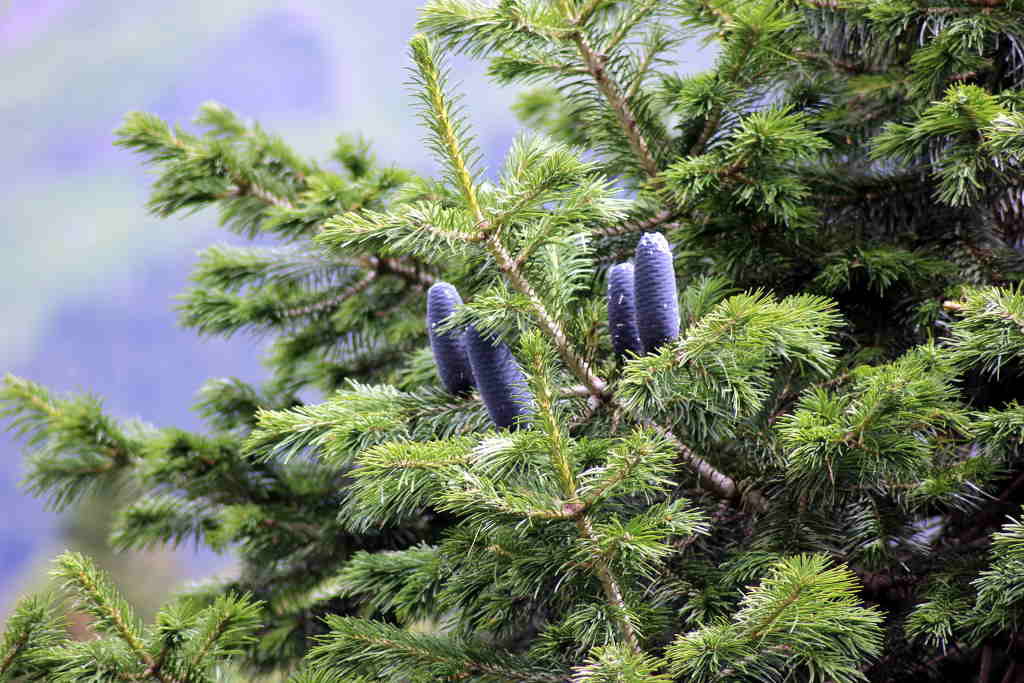
Abies spectabilis (Tosh)
Abies spectabilis (Tosh), commonly known as the Himalayan silver fir, is a majestic conifer found across the high-altitude forests of the Himalayas, including the pristine wilderness of the Great Himalayan National Park (GHNP). Known for its tall, straight trunk and silvery-green needles, this tree is both ecologically significant and visually striking.
Native to elevations ranging from 2,800 to 4,000 meters, Abies spectabilis thrives in cool, moist environments. In GHNP, it typically grows alongside other subalpine species like Cedrus deodara (Deodar), Betula utilis (Bhojpatra), and various rhododendrons, forming mixed forests that support a rich diversity of flora and fauna. The species can reach up to 50 meters in height, with a conical crown and horizontal branches that make it easily distinguishable from other conifers.
| Local name | Tosh |
| Botanical name | Abies spectabilis |
| Family | Pinaceae |
| Description | It is a large evergreen tree found between 2800-3600m. Young shoots clothed with brown hairs. Leaves spreading in all the directions and densely covering the twigs when viewed from above. Cones are dark purple. |
| Flowers & Fruits | April-May |
| Distribution | Common in the sub-alpine and alpine zones of GHNP |
Abies spectabilis (Tosh) plays a crucial ecological role in the GHNP ecosystem. Its dense canopy provides habitat and cover for numerous bird and mammal species, including the elusive Himalayan Monal and the Musk Deer. Its cones are a food source for squirrels and birds, while its presence helps in stabilizing soil and regulating water flow in mountain watersheds.
Culturally, the Tosh tree is valued for its timber and resin. Although its wood is considered less durable than Deodar, it has traditionally been used for construction and firewood in remote mountain villages. However, increasing conservation efforts have restricted its felling in protected areas like GHNP.
Due to pressures from climate change, habitat degradation, and overharvesting in non-protected zones, Abies spectabilis (Tosh) is now considered near-threatened. Conservation within GHNP and similar protected habitats is essential to ensure the species’ long-term survival.



